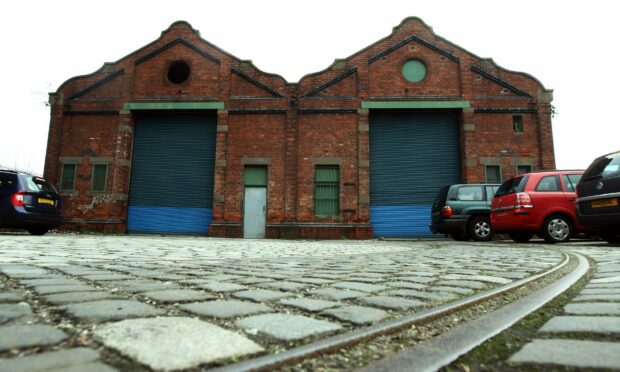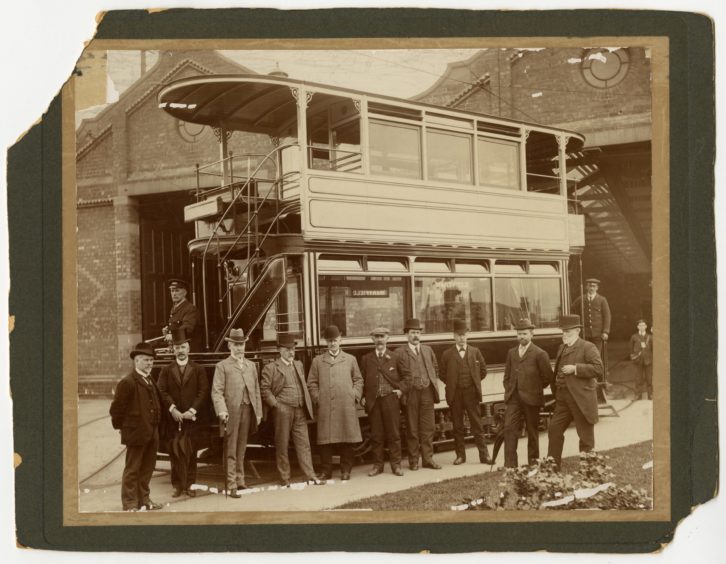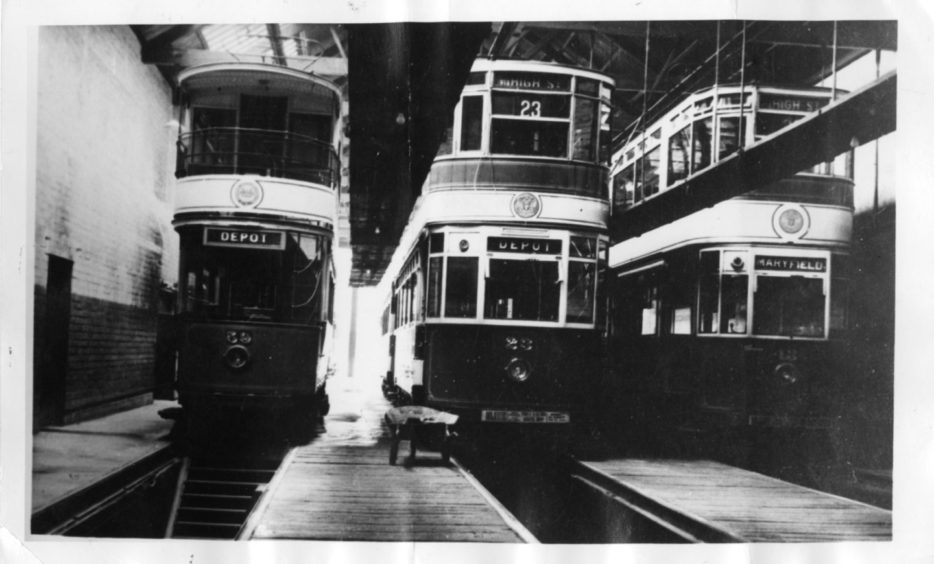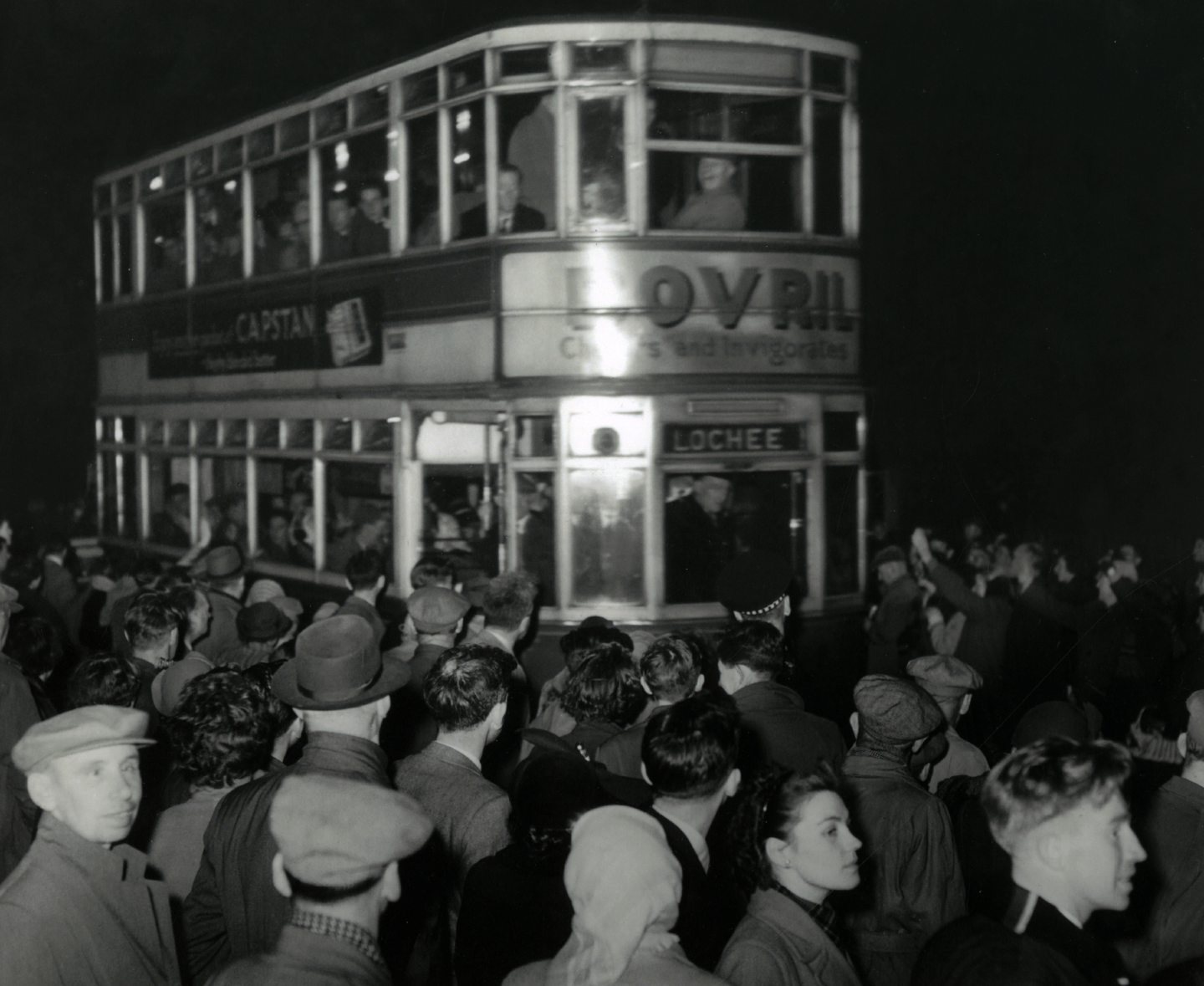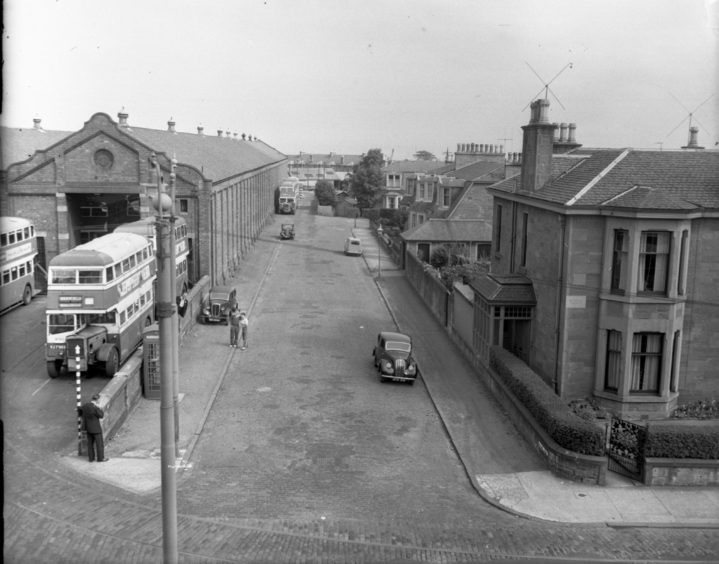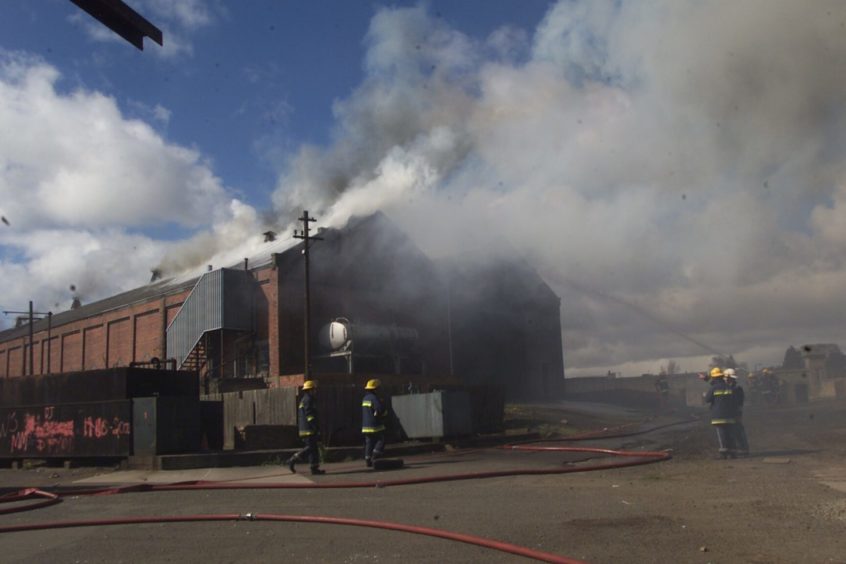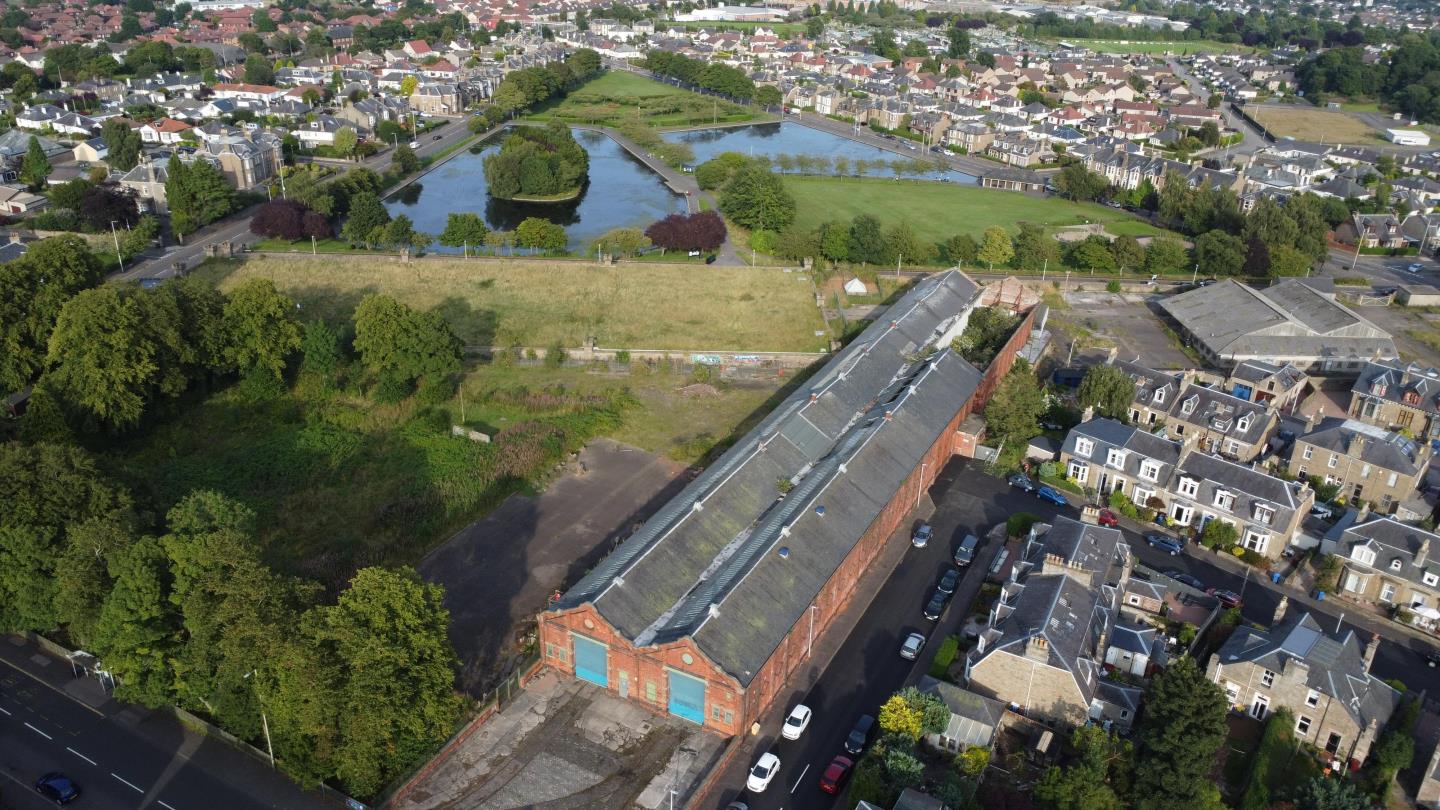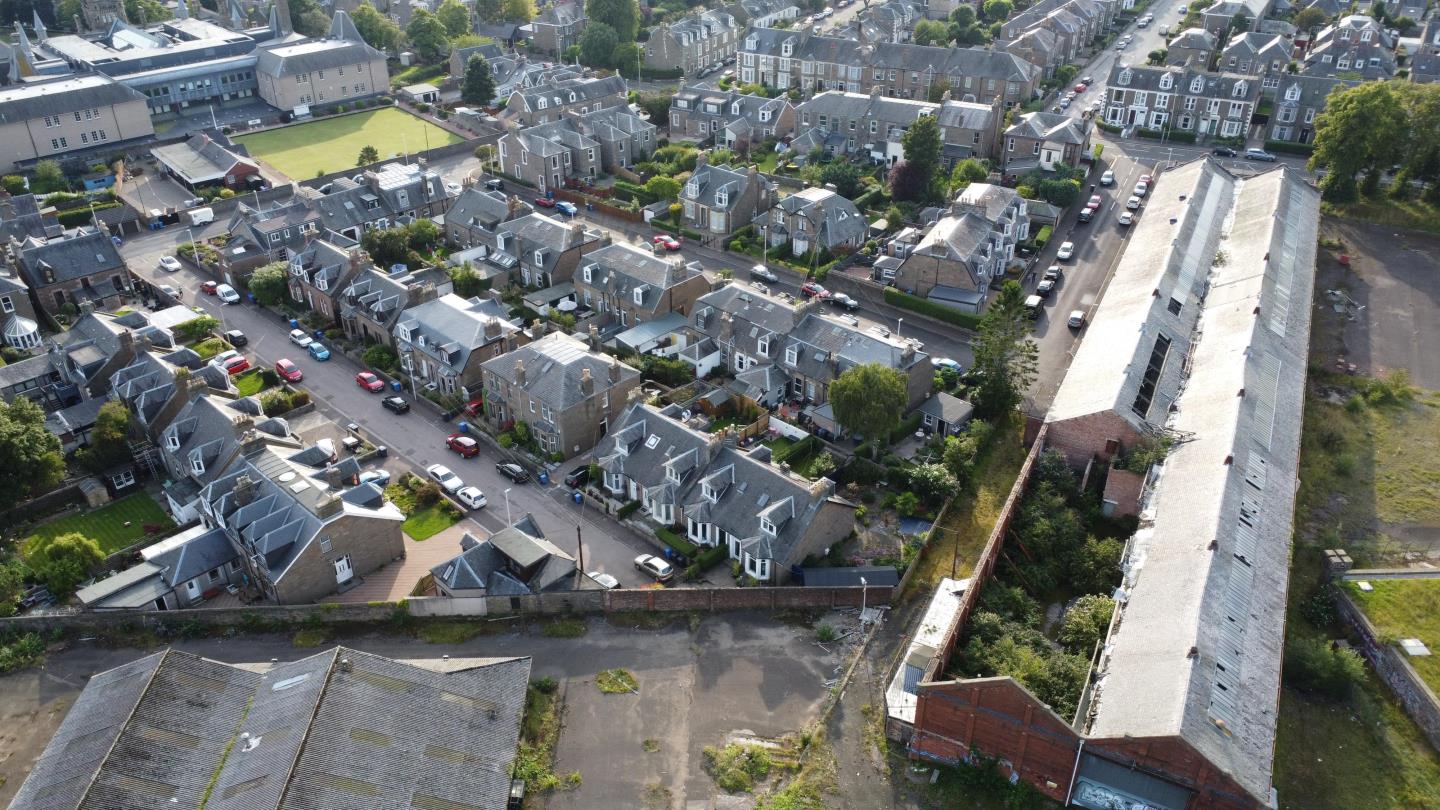With the Dundee Transport Museum to receive funds to help it turn the disused Maryfield Tram Depot into its new home, we look back at the glory days of the site.
The Maryfield depot on Forfar Road is a striking building that was first opened by the Dundee Corporation in 1901, with the most notable features of the building’s red and blue brick and curvilinear gables still recognisable today.
Originally the depot opened at a length of 60m with room to hold up to a dozen trams.
But just over a decade later, in 1913, it was agreed that an expansion of the site was needed and the building was given its first extension.
Work began again in 1920, which resulted in the site being doubled to 120m and provided enough room for 70 trams inside.
During its original construction the building featured gatepiers, which are no longer visible.
The removal of the piers is believed to be the result of renovations undertaken in the 1920s to widen the entrance to allow single-deck tramcars passage to the depot.
Trams were one of, if not the, main modes of transport for many locals to get around the city – so much so that during the prime years, in the 1930s, the Dundee Corporation had approximately 100 trams on the streets in a distinctive green-and-cream finish.
However, following the Second World War, like many cities, Dundee was in need of rejuvenation and modernisation, which meant the Dundee trams would soon be out of business.
Maryfield depot was the site of the last tram departure in Dundee when the “baby” of Dundee’s tram fleet, car No. 23, left the depot at one minute past midnight on October 21 1956.
It was the last of a line that started 79 years previously with a horse-drawn vehicle trundling from Albert Square to Windsor Street.
A Courier reporter who witnessed the last journey said: “I have never seen anything like it.
“Hundreds of cars lining the streets, thousands of people milling around, cheering, waving and singing, fireworks lighting the scene – and all in the wee sma’ hours of a Sunday morning.”
Driver David Bates said on arrival to the Lochee depot: “Ah well, that’s that. Ready to start in the bus driving school in the morning.”
After the end of the tram service, much of the city’s remaining fleet was burned and so a new purpose had to be found for the Maryfield depot.
Dundee Corporation retained ownership of the site and began storing its diesel bus fleet in Maryfield from then on.
This new bus depot combined a maintenance area and paint shop for the buses, which also wore a green and cream exterior reminiscent of the old trams.
By the mid-70s the site was no longer required by the corporation with the building passing into the hand of Scottish Water.
Little use was made of the building thereafter and it gradually fell into disrepair.
In 1993 the building was B-listed and in 2002 the building would be damaged further and placed on the Buildings at Risk register after a fire in the south-eastern quarter of the building left the area – built in 1920 – unroofed.
It has largely been left exposed to the elements ever since.
In 2015 the Dundee Museum of Transport purchased the site in the hopes it could become the new home of the venue following £4 million of renovations.
The plans have been in the works for several years; however, with many funding hurdles to overcome the site is still left unused.
Drone footage taken by local resident Ali Colville shows the state of the disrepair.
The plans were given a huge boost earlier this week, though, with councillors set to approve a £20,000 cash injection that will be used to commission reports required for planning approval, along with architect fees and consultation with locals.
Phase one would see the redevelopment of the rear section of the 118-year-old building, with the fire-damaged walls being retained with a steel structure inside the brickwork.
A new roof would be installed with the entrance located at the centre of the building, offering access to a cafe, shop and facilities separate from the exhibition space.
So while the building’s current state leaves a lot to be desired, it is hoped that soon the depot will be a state of the art attraction and some of Dundee’s trams will come home once more.
